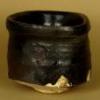Well, this is just the point, it insinuates that as per definition a Katana, 2 shaku at least, but shorter than 70 cm isn‘t a „real“ Nihonto...what is it than?
There was no insinuation made that blades less than 60 cm are not "real" nihonto, simply that they do not carry the monetary value, everything else equal, of longer blades.
Perhaps here is a historical reason:
"...According to Bakugi Sanko [The referral to the official issues of the Shogunate] written by Matsudaira Shungaku, a late Edo period daimyo and the last Lord of Fukui prefecture (also a cousin to the then Shogun), the legal lengths of swords to be officially worn by high ranking samurai to appear in the Edo Castle were a) 2 shaku 3 sun (=69.69cm) for katana and b) 1 shaku 6 sun to 7 sun (=48.48cm to 51.51cm) as officially set forth by the Tokugawa Shogunate (Ogasawara, 1994a)"
Thus the longer blades were to be worn by high ranking samurai, who, presumably, would have had the resources to afford better quality blades....maybe this is where the 2 shaku 3 sun length became the preferred nagasa.....???




